6th October 2025
Multipoint Lock Buying Guide: What to Look for and Why It Matters
Having the right lock is essential to ensure the safety and protection of your property. Understanding the different options available will help you to determine the best choice for your needs. In this guide, we’ll explore the different types of multipoint buying locks, where each type is commonly used, and what to consider when selecting one for your space.
IronmongeryDirect
6th October 2025
5 mins
What is a multipoint lock?
A multipoint lock is a locking system that secures a door at several points along its frame, usually at three or more points, offering maximum security and better sealing compared to a traditional single lock. These locks are most commonly fitted to uPVC and composite doors, such as on front and patio doors, to provide added protection and durability for homes. Multipoint locks distribute pressure across the door, reducing warping and sagging over time.
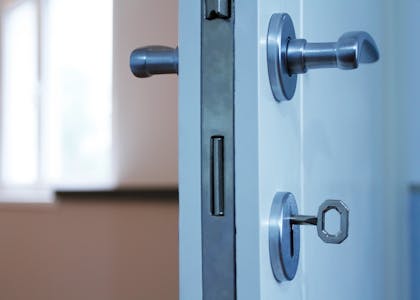
Types of multipoint locks
There are various multipoint door lock types available, all with their own set of benefits. The best option for your door depends on its specific needs, including the door’s material, frame design, and the level of security required. Understanding the different types available will help you to make the right choice.
Lever-operated multipoint locks
Lever-operated multipoint locks use a handle to engage multiple locking points simultaneously for a secure finish. This lock type is ideal for doors that require frequent opening and closing with smooth locking. Commonly used on uPVC, composite, and patio doors, they deliver reliable security and weather-sealing.
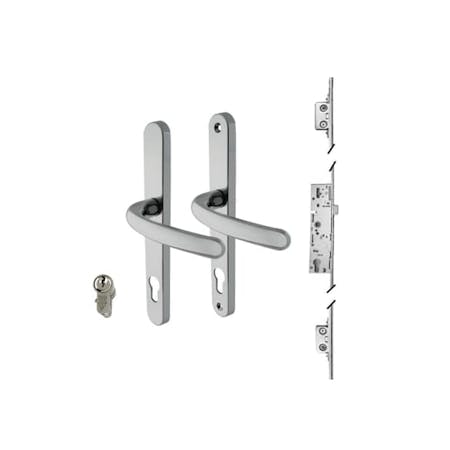
Key-operated multipoint locks
Key-operated multipoint locks rely on a key to lock and unlock multiple points along the door frame, providing strong security. Typically used for external doors where controlled access is important, they eliminate the need for a lifting handle and allow a traditional, key-only operation.
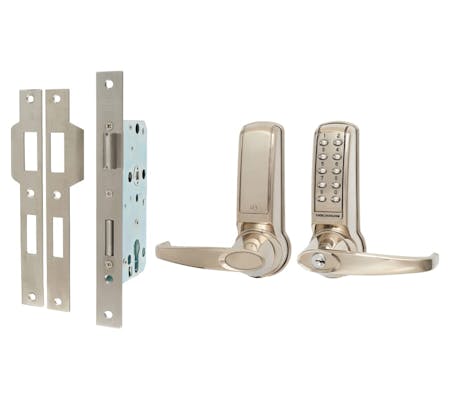
Automatic multipoint locks
Automatic multipoint locks engage multiple locking points automatically when the door is closed, enhancing convenience and security without requiring manual operation. Used for busy entrances or high-traffic areas, they’re popular due to their convenience and consistent sealing.
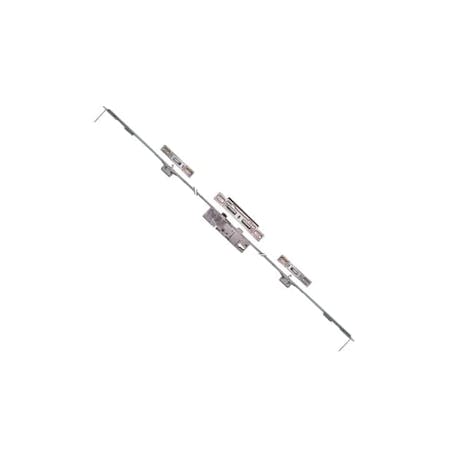
Smart multipoint locks
Smart multipoint locks integrate with digital systems, allowing remote control and monitoring via devices such as smartphones. These locks offer advanced security features like keyless entry, alerts, and user access management, perfect for modern homes and properties needing flexible entry.

Split spindle multipoint locks
Split spindle multipoint locks feature two separate spindles, allowing for independent operation of different lock mechanisms within the same system. They’re often used on doors where two separate handle operations are needed, such as ones with an internal lever handle for everyday use.
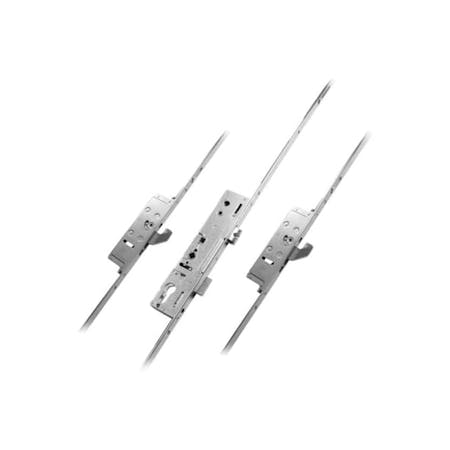
Dual-spindle multipoint locks
Dual spindle multipoint locks have two spindles that control both the handle and a separate locking function. They’re often found on doors that require both a lever handle and a key cylinder to operate separate locking actions. For example, front doors where the handle needs to be lifted and a key turned to lock or unlock the door. This allows the inside and outside handles to operate separately while maintaining multipoint security.
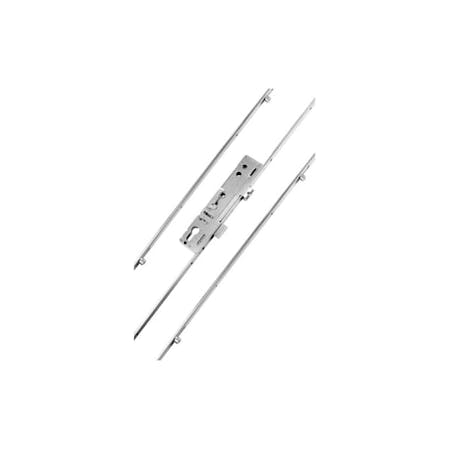
Multipoint lock features to consider
When choosing a multipoint lock, there’s several features that should be considered to ensure it fits and functions properly for your door, including the lock’s reliability and the level of security it provides.
Locking mechanism type
Different locking mechanisms, such as hooks and deadbolts, offer varying levels of security and functionality. The type chosen affects how the lock engages with the door frame and the ease of operation. For example, a deadbolt typically slides a solid rectangular bolt directly into the door frame, providing strong resistance against kicking or forced entry, whereas hooks latch onto a strike plate with a curved or hooked bolt, making them effective against prying and lifting.
Door compatibility
Considering the door’s material, thickness, and style is important to ensure you choose the right lock. Incompatible locks can result in fitting issues or reduced security, so it’s essential to confirm whether your door is wood, metal, or uPVC before installation.
Backset and PZ measurements
The backset and PZ measurements must align with the door’s specifications for the lock to fit properly and operate smoothly. The backset is the distance from the door edge to the lock’s centre, and PZ is the distance between the keyhole and handle spindle. Taking accurate measurements ensures proper fit, functionality, and security.
Security certifications
Security certifications such as PAS 24 or EN 12209 indicate that a multipoint lock has been tested for strength and reliability. Choosing a certified lock provides peace of mind by ensuring a higher level of protection against forced entry.
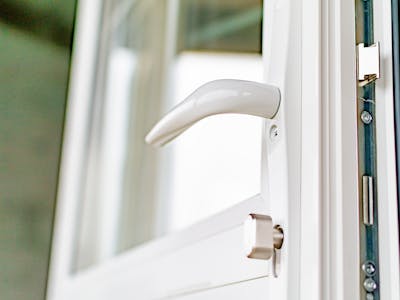
Common multipoint lock mistakes to avoid
If multipoint locks aren’t chosen or installed properly, they can compromise both their functionality and safety. We’ll explore the common multipoint lock mistakes to ensure these are avoided.
Choosing the wrong size or backset
Selecting the wrong backset or lock size can result in a poor fit, making it difficult to operate the lock, or even resulting in a non-functional system. Always measure your door accurately before purchasing.
Ignoring door requirements
Ignoring door requirements, such as the door’s material, thickness, or opening style can lead to compatibility issues. For example, uPVC and wooden doors often need different lock types or mechanisms.
Skipping security ratings
Overlooking security certifications can leave your door vulnerable to break-ins. Choosing locks with proper ratings ensures the product meets tested standards for strength and durability. You can check this with your manufacturer.
Poor installation or misalignment
Improper installation or misaligned components can prevent the lock from engaging correctly, reducing security and causing premature wear. Following the manufacturer’s guidelines carefully or hiring a professional installer will ensure the process runs smoothly.
Discover multipoint door locks at IronmongeryDirect
This guide has explored the different types of multipoint locks, key features to consider when choosing your lock, and common mistakes to avoid. Find the right door lock for your next project with our wide range of multipoint locks from IronmongeryDirect.
FAQs
What’s the difference between a multipoint lock and a single point lock?
A single point lock secures the door at only one point, while a multipoint lock secures it at multiple points along the frame, usually three or more. This makes multipoint locks more secure and resistant to forced entry compared to standard single-point locks.
Are multipoint locks suitable for all types of doors?
Multipoint locks can be used with a wide range of door types, including uPVC, composite, timber, and aluminium doors. Always ensure compatibility with the door’s thickness, material, and design, as this could affect its functionality and fit.
Can I install a multipoint lock myself?
While you can install a multipoint lock yourself, it requires precise measurements and alignment. Hiring a professional is recommended to prevent damage to the door lock or mechanism.
How many locking points does a multipoint lock have?
Most multipoint locks have three main locking points. These are commonly at the top, middle, and bottom of the door, and some models have even more.
